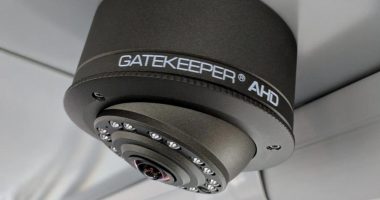Our next company is an AI-powered platform providing people with an augmented reality experience through indoor and outdoor spaces. By utilizing the mini computers that are in most people’s pockets, i.e. phones, ARway leverages the power of these devices to create environments that can improve visitor experiences, increase engagement and more.
Today we have the CEO of ARway here with us, Evan Gappelberg. Hello, and thanks for joining us.
TMH: For those who are new to the company, what is a brief explanation you can give?
EG: ARway is an AI powered platform as you mentioned, that provides augmented reality experiences focusing on indoor spaces. The platform allows users to easily create navigation tours, information sharing, notifications, advertising, gamification. It’s really a self-serve platform that anybody can use. It leverages as you mentioned, the power of your phone to create environments. Ultimately, that improve visitor’s experience, improves an employee’s productivity through training, increases engagement through gamification, creates new advertising space by monetizing the air and ultimately boosts revenue and all of this happens just by scanning a QR code.
Really, if you think about the experience platform called ARway, indoor wayfinding and navigation is kind of the killer app. You can create a curated tour for a museum have audio, images and videos that are kind of just floating in the air that you can interact with 3D objects, 3d text, hotspots, training for employees can happen, advertising and of course a very robust analytics backend is available with the platform as well.
TMH: What about indoor navigation through the app? Has this been a main use case and what company has really excelled at?
EG: It is. Indoor wayfinding sucks. I mean if you go inside a building, Google doesn’t work because it’s all gps. They’ve mastered the art of navigation outside of a building but inside of a building is just a complete fail and so augmented reality wayfinding is the solution and this platform is the killer platform for indoor navigation. So, most people don’t think about why indoor navigation hasn’t been adopted yet but it’s because the technology as I mentioned sucks. It’s a poor experience.
So, the ARway platform is going to really disrupt the whole indoor wayfinding market, cost effective, simple to implement really point and click on the back end and we’re super excited about it.
TMH: You know how many university students less anxiety on will probably have their first day of class finding the science wing or something
EG: I’ll never forget my first day, just roaming around a campus with 40,000 students saying like I have no idea and I remember missing classes because I’m just on the other side of this huge college campus. So yeah, absolutely. We see that as one of the great use cases.
TMH: Given the time that we live in, many companies have various AI technologies and immersive experiences. What is your competitive advantage?
EG: So, what sets us apart and why we’re disrupting the 44 billion indoor positioning and navigation market is Arway is no code, no beacon, no hardware solution enabled by visual market tracking with center meter precision. That’s very, very important. No other company is able to provide this except ARway and it’s because we’re leveraging the power of AI. So again, you don’t need to be a coder. You don’t need to install any hardware; all you need is your cell phone and our web-based platform and you are in the indoor wayfinding business
TMH: Looking at who is interested in the technology, the company really appeals to a vast group. We have malls, hospitals, airports, universities and more on the list. Can you divulge specific examples of the technology used in some of these situations?
EG: Yes, I mean it’s really a solution for variety of large indoor spaces as you mentioned, stadiums, events, retail, museums, hotel, universities, of course hospitals. So, some of the names that we’re currently engaged with, JFK Airport, Verizon the cell phone company, Palm Beach University, Tafe university, Shell Petroleum, Phillip Morris, Taner Outlets, the Government of Canada. I mean, that’s just the sampling of some big, big accounts. Everybody that we’re talking to is enterprise level. They’re all significant opportunities and they’re all super, super interested in our technology.
TMH: What kind of growth have you seen since launching the company? How many projects are currently under your belt?
EG: There’s over 20 pilots in play right now. We mentioned a few. I mean there’s just a long list. I mean 20 is a lot. I’ve mentioned a few already but it’s really just starting. So, there’s lots and lots of opportunities. I mean, I could just name one of them. There’s a company called I’m just looking at like a list of some agencies that we work with. So, the Southern Alberta you mentioned I think you’re from Alberta. The Southern Alberta Institute of Technology. So, they’ll be using ARway for curriculum projects and build AR experiences with the platform. So, there you have it, a local university in Canada but there’s tons and tons. I mean we were just at Harvard University two weeks ago. They invited us in to demo the platform. So, there’s just a lot of interest in what ARway brings to the university experience.
TMH: When looking into 2023 and beyond, what lies ahead for ARway? Or what hurdles does ARway hope to overcome?
EG: So, it’s an enterprise platform. So, when you think of enterprise they take three months to six months before they pull the trigger. So that’s really just normal for these types of accounts but we’re currently in talks with many. The process does take months. So that is kind of the biggest let’s just call that a hurdle but we’re on the cusp of signing some major deals in 2023 as mentioned, we have 20 plus pilot projects which are going to end up being worth potentially millions of dollars to ARway. There’s an enormous amount of revenue that’s starting to build in the pipeline already and we’re just really coming in. We just finished Q1, we’re still just in the middle of q2. So, the fact that our pipeline already represents millions in potential revenue is quite exciting And we see this as just the beginning of this mega trend.
TMH: I understand you are beginning to work with a few glasses manufacturers. What does this entail? And how will the Apple headset release in 2023 affect the entire industry?
EG: Overall the potential release of the Apple headset in 2023 is likely to have a significant impact on the AR VR industry. It’s gonna spur innovation and I think explode the market as a whole. From ARway’s standpoint, there’s really three emerging platforms, Unity which has Magic Leap building on it. HoloLens, is also on it and the HTC Vibe glasses are on it. Snap Dragon is number two with Lenovo, Vygis, LG TCL and then number three you really have some of these walled gardens like Snap or Oculus but they’re all starting to move to Unity.
We built our platform on Unity, so we will be initially integrating with the Unity players like Magic Leap, HTC, and HoloLens. Stay tuned for that integration and again, we see the glasses as blue sky growth opportunities and the next leg up in this whole augmented reality experience platform called ARway.
TMH: It’s been a pleasure; thanks for speaking with us today, Evan.
Again, we have been speaking with the CEO of ARway, Evan Gappelberg. To stay updated on the company, head to arway.ai or track down the tri-listed company on the CSE under the ticker symbol ‘ARWY.’ and on the OTC under the ticker symbol ARWYF.
A special thanks to you, our viewers, for joining us today…I’m Brieanna McCutcheon for The Market Herald, and thanks for watching The Top Line.
FULL DISCLOSURE: This is sponsored content issued on behalf of ARway, please see full disclaimer here.” here.



